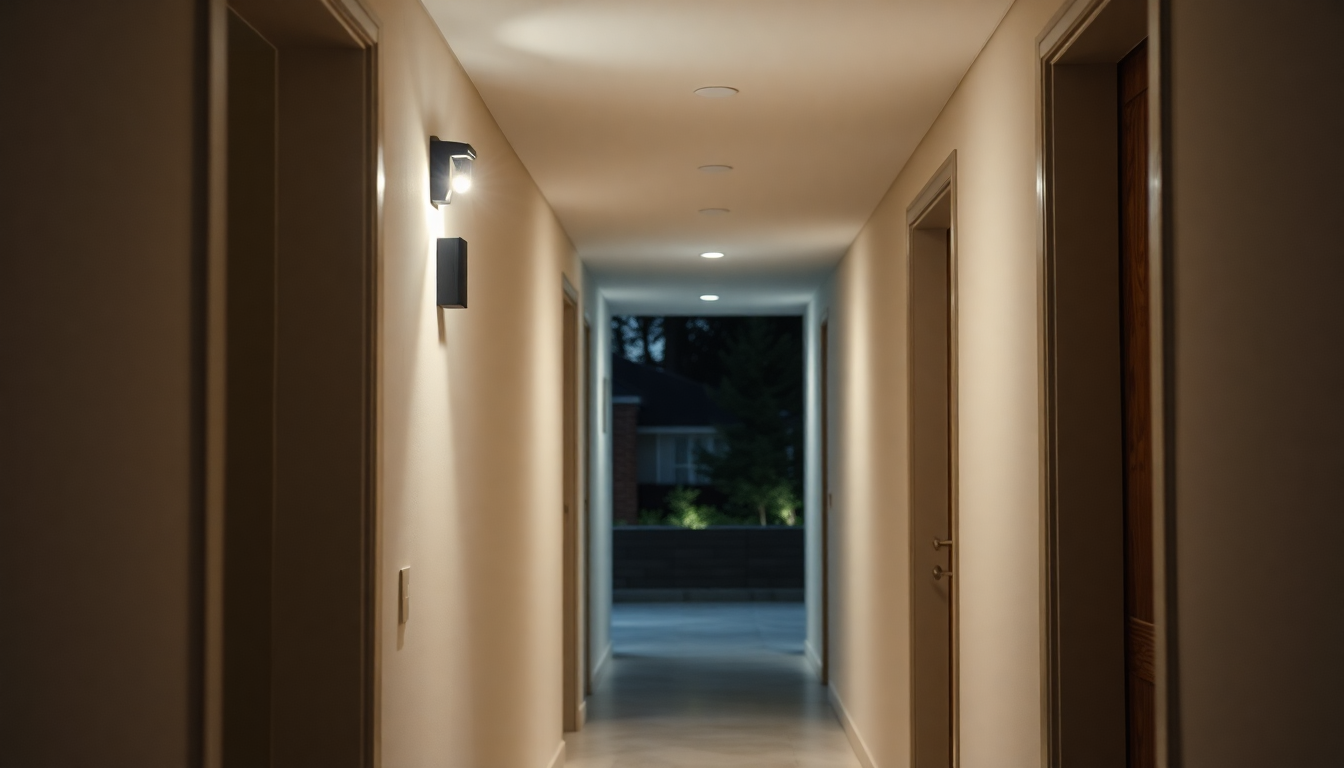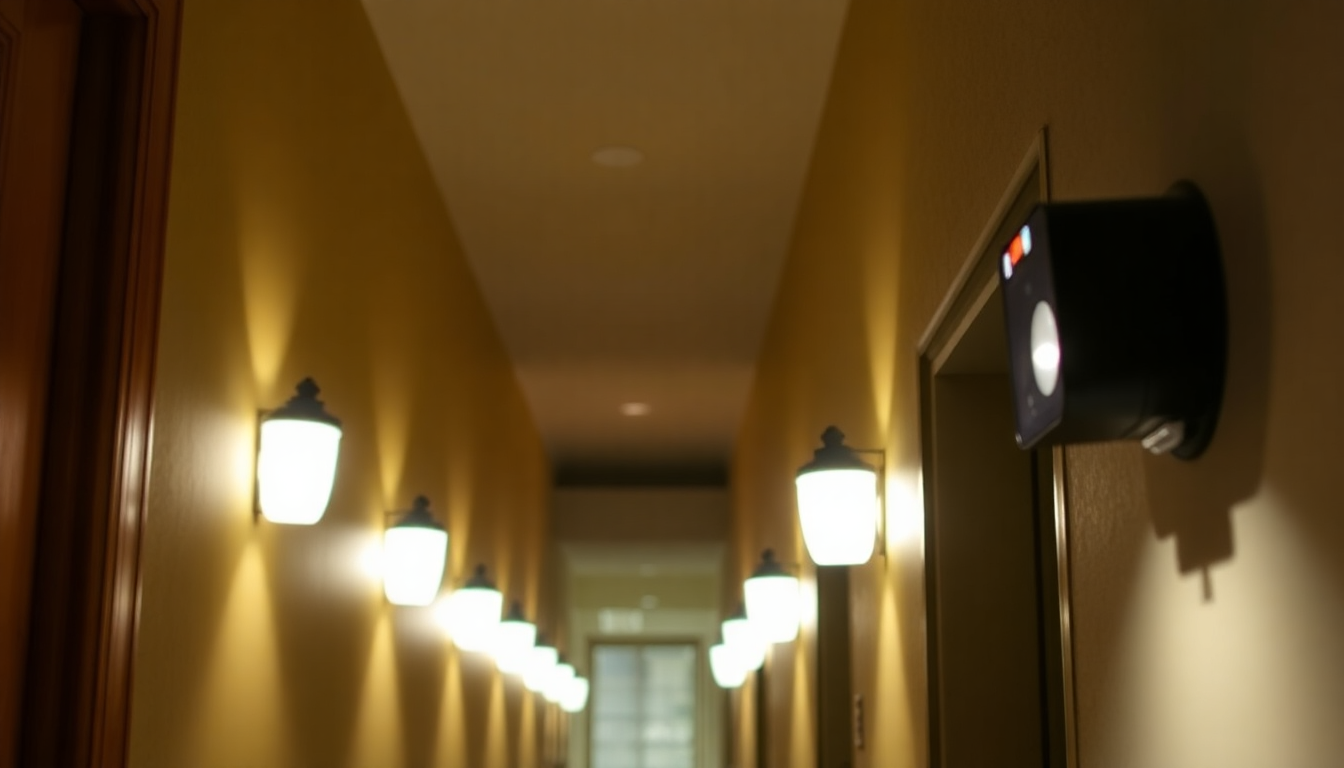Introduction
Smart rechargeable night lights are a small but strategic investment that can materially improve safety, reduce incident-related OPEX, and improve resident satisfaction across multiunit housing, senior living, assisted living, and commercial properties. In 2025, the market offers many options that blend low-cost illumination with motion sensing, connectivity, and analytics. For property managers, procurement must balance fall-prevention effectiveness, realistic battery life and lifecycle costs, resident privacy and cybersecurity, installation and maintenance workflows, and sustainability.
Why this checklist matters
- Falls remain a leading cause of injury for older adults and create liability, emergency response costs, and tenant dissatisfaction.
- Rechargeable designs reduce recurring disposable-battery waste and can lower long-term OPEX if battery lifecycle and maintenance are managed.
- Connectivity and sensors can provide useful operational data but introduce privacy and security obligations.
- A standardized vendor evaluation process helps property teams compare offerings on objective metrics rather than marketing claims.
Executive summary: key decisions for property managers
- Prioritize devices that demonstrate fall-prevention effectiveness through placement guidance, motion detection tuned for human movement, and adaptive low-glare illumination.
- Insist on vendor-provided real-world battery cycle data for your expected duty cycle, and model annualized battery OPEX including labor for replacements.
- Choose privacy-first architectures: local motion processing, data minimization, explicit resident opt-in for cameras, and strong encryption and firmware update practices.
- Design a pilot that gathers fall incident metrics, device uptime, battery replacement frequency, resident satisfaction, and maintenance time data for 6 to 12 months before scaling.
Human factors and lighting requirements for fall prevention
Lighting design for wayfinding and fall prevention is not just about raw lumen output. Consider human factors:
- Vertical illuminance vs horizontal illuminance: low-level, floor-oriented light is more effective for step edge contrast and obstacle detection at night.
- Color temperature: warmer tones (2700K to 3000K) reduce glare and are preferable for bedrooms; corridor lighting can be slightly cooler but avoid harsh blue-rich light at night.
- Contrast and shadowing: beam patterns should avoid deep shadows that obscure trip hazards; diffused, low-angle light helps reveal floor texture and edges.
- Transition lighting: lights that ramp up softly help avoid startling residents and maintain night-adapted vision.
- Sensory accessibility: consider vision-impaired residents and combine lighting with tactile cues and clear signage where possible.
Technical feature checklist: what to evaluate
- Motion sensing technology: PIR, microwave, or combined sensors. PIR is energy-efficient and effective for human body heat detection; combined sensors can reduce false positives but consume more power.
- Sensitivity and detection range: vendor should provide detection zone diagrams (angles and meters) and tunable sensitivity to avoid pet or HVAC false triggers.
- Activation latency: target under 1 second for immediate illumination when a resident stands or walks.
- Hold time and adaptive re-trigger: configurable hold times and re-trigger logic to keep paths lit while the person moves without wasting energy.
- Adaptive brightness: automatic adjustment by time of night, ambient light level, or based on resident profile to reduce glare and save power.
- Beam pattern and mounting orientation: low-angle, floor-level illumination is ideal; vendor placement guides should show mounting height and orientation examples for bedroom, bathroom, corridor, stairs, and doorway use cases.
- Fail-safe mode: default-on or scheduled override for high-risk residents, and graceful dimming before full shutoff if battery is low.
- Interoperability: APIs or integration points with CMMS/work-order systems and building automation if required.
- Durability and ingress protection: consider IP ratings and tamper resistance in common areas and bathrooms.
Battery chemistry, lifecycle, and real-world performance
Battery claims in marketing materials are often idealized. Request vendor-supplied data and run your own pilot to validate.
- Preferred chemistries: LiFePO4 offers exceptional cycle life and thermal stability; modern Li-ion cells provide high energy density but lower cycle counts. For heavy-cycle applications, LiFePO4 is often preferable despite higher upfront cost.
- Cycle life metric: obtain cycles to 80% of initial capacity under your duty cycle. Typical numbers: Li-ion 800–1500 cycles, LiFePO4 1500–3000+ cycles.
- Real-world duty-cycle testing: define a representative duty cycle (for example, 40 activations/night, 30 seconds per activation) and ask vendors to provide measured runtime, recharge time, and expected calendar life under that cycle.
- Standby drain and self-discharge: low microamp standby extends time between charges and reduces maintenance visits.
- Charging strategies: in-place trickle charging, periodic swap-and-charge using docks, or charging during maintenance rounds. Each has trade-offs in labor and infrastructure.
- Battery replacement logistics: source of replacement cells, ease of field replacement, safety procedures, and vendor support for replacements.
- End-of-life and recycling: vendor take-back programs, certified recyclers, and documentation for hazardous materials handling are critical for sustainability and compliance.
Modeling battery OPEX: practical example
This sample model lets you estimate annual battery OPEX per unit. Replace numbers with vendor quotes and your operational inputs.
- Inputs:
- Unit purchase price: 40
- Battery replacement cost (parts): 12
- Labor time per replacement: 20 minutes (0.33 hours)
- Technician fully loaded hourly cost: 45
- Expected battery replacements per unit per year: 0.07 (one replacement every ~14 years) for LiFePO4; adjust for your data
- Warranty/contract cost per unit per year: 2
- Calculations:
- Labor cost per replacement = 0.33 x 45 = 15
- Total cost per replacement = 12 + 15 = 27
- Annual battery OPEX per unit = 27 x 0.07 = 1.89
- Annualized hardware depreciation (assume 8-year useful life) = 40 / 8 = 5
- Total annual OPEX per unit = 1.89 + 5 + 2 = 8.89
- Use this to compare to expected savings from reduced falls, fewer calls to maintenance, and improved resident retention. If each avoided fall saves 1000 in direct and indirect costs and you prevent 1 fall per 100 units per year, the benefit scales quickly.
Privacy, data minimization and cybersecurity
Connectivity features can provide operational value but introduce privacy and security risks you must manage proactively.
- Data minimization: insist that devices collect the minimum required data. For fall prevention, occupancy events or motion timestamps are usually sufficient. Avoid solutions that transmit raw sensor data such as audio or video without strong justification and consent.
- Local processing vs cloud: local event processing reduces data transfer and privacy risk. If cloud analytics are used, ensure data is anonymized, aggregated, and stored for minimal time.
- Encryption and authentication: require TLS for in-transit data, AES for data at rest, secure pairing methods, and role-based access control for management portals.
- Firmware management: demand signed firmware updates, an established vulnerability disclosure and patching process, and an SLA for security patches (for example, critical patches within 30 days of disclosure).
- Certifications and audits: request SOC 2 Type II reports, ISO 27001 certificates, and third-party penetration test summaries if the vendor handles sensitive data.
- Resident consent: develop clear opt-in policies for sensors that could be perceived as invasive. Provide simple mechanisms for residents to disable nonessential data collection where appropriate.
- Data retention and deletion: require vendor policies that specify short retention for event logs, clear deletion processes, and rights to export or delete tenant-related data on request.
Accessibility, compliance and regulatory considerations
- ADA and local accessibility codes: ensure lighting installations do not create obstructions, protrusions, or hazards for vision-impaired residents and comply with local building codes.
- Healthcare and assisted living regulations: in licensed senior care environments, check state and federal rules about monitoring devices and resident privacy; some jurisdictions require explicit resident or family consent.
- Insurance and risk transfer: notify carriers when deploying sensor networks. Some insurers may offer premium discounts or require certain security controls.
- Environmental and waste regulations: battery disposal must comply with local hazardous waste laws. Vendor take-back programs reduce your compliance burden.
Installation, maintenance and lifecycle workflows
A practical installation and maintenance workflow reduces downtime and labor cost.
- Pilot planning: identify high-risk locations (bathrooms, nightstand areas, stairs, corridors) and deploy a small pilot of representative units for 3 to 6 months to collect actionable data.
- Mounting standards: use consistent mounting heights and orientation for predictable coverage; label units with asset tags and record location in your CMMS.
- Charging and replacement process:
- Swap-and-charge: devices are swapped during rounds and recharged in a charging cart. Advantage: minimal resident disruption. Disadvantage: requires spare inventory and charging infrastructure.
- In-place charging: devices recharge while mounted using wired or inductive methods. Advantage: fewer swaps. Disadvantage: higher installation complexity.
- Monitoring and alerts: integrate battery health and device offline alerts with your work-order system so maintenance responds before residents notice failures.
- Spares and logistics: define spare ratios (for example, 5–10% spare units per 100 units) and maintain a predictable reorder point based on replacement intervals and lead times.
- Field replacement procedures: train maintenance staff on safe battery handling, quick swap procedures, and documentation of replacements.
Procurement and RFP guidance
Use the following RFP structure and questions to elicit comparable responses.
- Scope of work: number of units, property types, installation categories (in-room, corridor, stair, bathroom), and pilot vs roll-out phases.
- Technical requirements: detection zone diagrams, lumen output at floor level, color temperature options, adaptive brightness, activation latency, and low-glare ramping.
- Battery and power:
- Specify required battery chemistry options, cycle life to 80% capacity under defined duty cycle, recharge time, standby current, and recommended charging strategy.
- Security and privacy:
- Data minimization commitments, local vs cloud processing, encryption standards, firmware update policy, and evidence of security audits.
- Installation and maintenance:
- Mounting descriptions, tamper-resistance options, spare parts approach, remote diagnostics, and integration with CMMS/work-order systems.
- Service and support:
- SLA definitions for critical failures, replacement lead times, warranty coverage including battery warranties, and options for on-site support.
- Pricing and TCO:
- Unit price, battery replacement cost, recommended spare ratios, labor per replacement, software subscription costs, and any recurring platform fees.
- References and validation:
- Provide three installations in multiunit housing or senior living with before/after fall incident statistics and battery replacement histories.
Vendor scorecard and weighting example
Use a weighted scoring model to compare vendors objectively. Sample weights total 100.
- Fall-prevention features and lighting effectiveness: 25
- Battery lifecycle and OPEX: 20
- Privacy and cybersecurity: 20
- Installation and maintenance ease: 10
- Warranty and support: 10
- Price and TCO: 10
- References and proven deployments: 5
Score each vendor on a 1–10 scale for each criterion, multiply by weight, and compare total scores. This helps separate vendors with similar prices but different lifecycle and privacy characteristics.
Pilot program design: step-by-step
- Define objectives: reduce nighttime falls in targeted areas by X% within 12 months; measure device uptime and battery replacement cadence.
- Select sites: choose 10–20 high-risk rooms and a few common-area corridors and staircases.
- Baseline data collection: record historical fall incidents, maintenance response times, and resident feedback for 6–12 months prior to pilot.
- Deployment and resident communication: provide clear notices to residents about purpose, privacy measures, and how to opt out if appropriate.
- Data collection and monitoring: collect device uptime, battery health, activation counts, and incident reports continuously. Integrate alerts into CMMS for maintenance tracking.
- Interim reviews: monthly KPI review meetings to adjust sensor sensitivity, placement, or hold times based on false-trigger or dark-spot feedback.
- Evaluation at 6 and 12 months: compare fall metrics, total maintenance hours, battery replacements, and resident satisfaction. Use learnings to refine vendor requirements before scaling.
Integration with building systems and workflows
- CMMS/work-order integration: ensure device alerts create tickets automatically and include asset tags and location data for rapid dispatch.
- Power and charging infrastructure: plan for charging carts, charging docks, or hardwired recharge points depending on chosen strategy.
- Smart building integration: if integration with BAS is desired, confirm APIs and data models to avoid vendor lock-in or brittle integrations.
- Resident support processes: document how to handle resident complaints, unit failures, and opt-out requests. Train front-desk and maintenance staff on common issues.
Case studies and examples
Three concise examples to illustrate outcomes and trade-offs.
- Case A — Senior independent living pilot, 200 units
- Devices: PIR-based, LiFePO4 batteries, dock-based swap charging.
- Results: 45% reduction in nighttime falls in bathrooms and hallways after 12 months; annual battery OPEX 3 per unit; payback period 10 months when accounting for avoided incident costs and lower ER transports.
- Case B — Affordable housing, 600 units
- Devices: low-cost Li-ion rechargeable units with cloud analytics and firmware updates.
- Results: initial cost savings but high battery replacement rates in year 3 led to higher than expected OPEX; vendor later offered improved cells under warranty. Lesson: validate cycle life claims and require battery warranty clauses.
- Case C — Mixed-use building, 150 units with shared commercial spaces
- Devices: combined sensor units integrated into building management for after-hours corridor lighting.
- Results: consolidated platform reduced maintenance complexity and enabled aggregated usage insights, but required strict data partitioning to meet tenant privacy expectations.
Procurement contract clauses to include
- Battery performance guarantee: vendor must supply measured cycle data for agreed duty cycle and warrant battery capacity above 80% for N cycles or years.
- Firmware and security SLA: commitment to security patches within a defined timeframe and continuity plan in case of vendor insolvency.
- Privacy and data ownership: explicit ownership of operational and resident data retained by the property, with vendor required to delete tenant-identifiable data on request.
- Warranty coverage: define parts, battery, and labor coverage for an initial warranty period, and extended warranty options.
- Service credits: SLAs tied to device uptime and response times, with service credits for missed targets.
- Take-back and recycling: vendor responsible for end-of-life battery recycling and proof of proper disposal.
Troubleshooting and common failure modes
- False triggers: often caused by pets, air vents, or reflections. Mitigation: tune sensitivity, adjust detection zones, or change mounting position.
- Battery drain too fast: causes include high activation rates, continuous cloud polling, or firmware bugs. Mitigation: request battery health logs, disable nonessential connectivity, and apply firmware updates.
- Connectivity issues: intermittent Wi-Fi or BLE can affect cloud-dependent units. Mitigation: prefer local processing for motion events and use connectivity only for periodic telemetry.
- Physical damage or tampering: use tamper-resistant mounts and asset tags; schedule inspections in common areas.
- Resident complaints about glare: reduce brightness, change color temperature, or use adaptive dimming profiles for sensitive residents.
Sustainability and circularity considerations
- Prefer long-cycle battery chemistries even if upfront cost is higher; lifespan reduces waste and replacement emissions.
- Vendor take-back and recycling programs reduce compliance burden and demonstrate environmental responsibility.
- Assess embodied carbon if available from vendor lifecycle assessments; sometimes slightly higher upfront cost with longer life delivers lower lifetime emissions.
- Minimize single-use components and require modular designs that make battery replacement straightforward to avoid premature unit disposal.
KPIs to track during pilot and rollout
- Nighttime fall incident rate by area and per 100 residents.
- Battery replacements per 1000 devices per year.
- Device uptime percentage and mean time between failures.
- Mean time to replace (MTTR) when device fails or battery is replaced.
- Maintenance hours per month related to night lights.
- Resident satisfaction and perceived safety scores from surveys.
- Cost per avoided fall = (Total annual OPEX associated with lights) / (Number of falls prevented annually).
Sample resident communication templates
Concise, respectful communication improves acceptance.
- Notice of pilot deployment: explain purpose, privacy protections, opt-out process, and contact for questions.
- FAQ for residents: simple answers about data collection, how to request removal, and who to contact for issues.
- Post-pilot summary: share measurable outcomes and next steps to build trust and support expansion.
Frequently asked questions (FAQ)
- Q: Will these lights record video or audio? A: Not unless you opt into devices with cameras. Prioritize motion-only sensors and require resident consent for any audio/video functionality.
- Q: How often will batteries need replacement? A: Depends on chemistry and duty cycle. Ask vendors for cycle-life data under your expected activations and verify during a pilot.
- Q: Can maintenance staff handle battery swaps? A: Yes, with simple training and proper charging workflows. Ensure safe handling procedures are in place.
- Q: Will lighting disturb sleep? A: Choose warm color temperatures, soft ramp-up profiles, and lower lumen outputs aimed at wayfinding rather than full-room illumination.
Additional resources and references
- Lighting design guidelines for residential and healthcare settings (consult local codes and industry guidance).
- Battery safety and recycling regulations by region.
- Security standards and best practices for IoT devices (OWASP IoT Top Ten, NIST IoT guidance).
- Case literature on fall prevention interventions and lighting research for older adults.
Conclusion: a practical roadmap
Smart rechargeable night lights can deliver meaningful safety benefits and cost savings when procured and managed with a lifecycle mindset. To recap a practical roadmap:
- Start with a focused pilot in high-risk areas and gather baseline incident and device telemetry data.
- Require vendors to supply measured battery cycle data using your duty-cycle profile and insist on battery warranties and take-back programs.
- Prefer privacy-first solutions that process motion locally, collect minimal data, and provide clear opt-in policies for residents.
- Integrate device alerts with your CMMS and build a charging and spare-parts strategy to minimize downtime and labor cost.
- Use a weighted vendor scorecard that values fall-prevention efficacy, battery lifecycle economics, and security as highly as purchase price.
Investing time in rigorous vendor evaluation and realistic OPEX modeling will ensure night-light programs improve resident safety, limit long-term operating cost surprises, and maintain resident trust through responsible data practices. Once you have validated performance in a pilot, scale with a predictable replacement cadence, strong vendor SLAs, and clear resident communications to maximize value.




Leave a comment
All comments are moderated before being published.
This site is protected by hCaptcha and the hCaptcha Privacy Policy and Terms of Service apply.